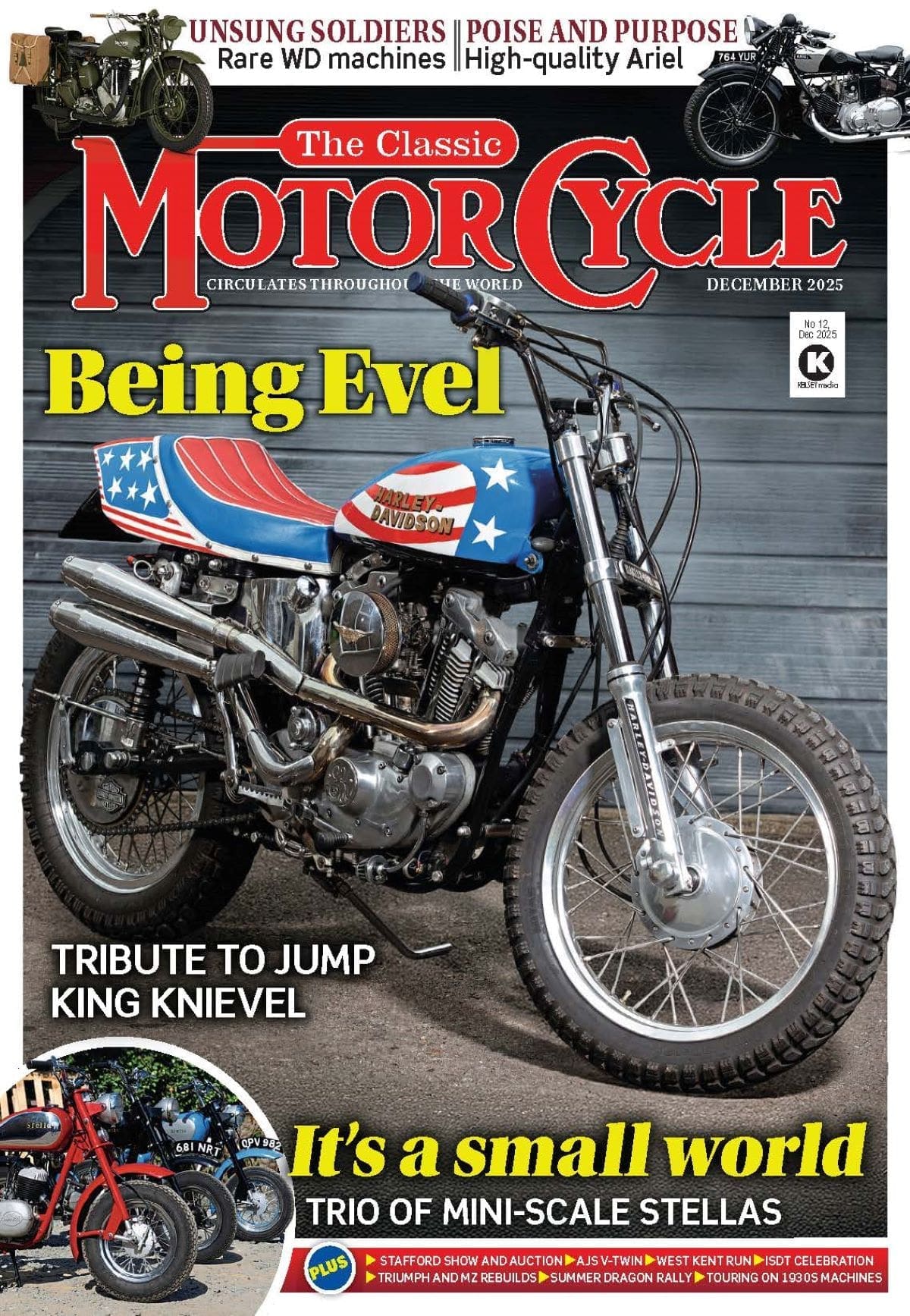Though reportedly it ‘handled like a camel’ and other such unflattering sobriquets, this AJS V-twin would’ve ruled the motorcycle world if it had been down to just good looks.

Photograph: MORTONS ARCHIVE
This fascinating machine, which now resides in the National Motorcycle Museum in Birmingham, is possessed of what is, perhaps, the most visually beautiful – or, if not beautiful, dramatic perhaps – engine of any motorcycle ever made.
Enjoy more The Classic MotorCycle Magazine reading every month.
Click here to subscribe & save.
It’s pictured here in probably 1936, with Charles Mortimer in the saddle, who had bought it from the Colliers, then owners of AJS. The story of the machine begins in 1929 when AJS – still in the ownership and control of the Stevens family at that point – decided to build a machine to have a crack at the motorcycle speed world record, which was, at that time, in the possession of Germany, owing to BMW rider Ernst Henne’s 134.67mph, recorded on September 19, 1929.
There was stiff competition for the honours, with Henne battling various British riders (Claude Temple, Bert Le Vack, Joe Wright, Oliver Baldwin) using various, generally JAP-powered machines. AJS decided to enter the fray.
The project was headed up by Jack Stevens, with the original idea coming from entrant and sponsor Nigel Spring, who had been recruited by AJS to run its race team with a ‘very handsome offer’ in the winter of 1926/27. Indeed, so good was the deal, that when Spring told Norton’s Dennis Mansell – as Spring had previously been in a relationship with Norton – it was Mansell who told him to take the offer, as it was too good to turn down! Spring was keen on record breaking, with the ‘big one’ the ultimate goal.
To that end, the machine was drawn up, effectively two of the ‘top halves’ from a chain-driven overhead camshaft 495cc single, mounted on a common crankcase, with a third chain driving the front mounted magneto. A purpose-built frame was constructed, with a Sturmey Archer gearbox, special Amal carbs and a 23-inch front tyre being used. Spring’s regular rider Bert Denley was unable to ride it owing to a conflicting oil contract, so Baldwin – who had held the record in 1928 – was engaged for the tilt in August 1930. Alas, 132mph was the best it could record, so it was taken home and mothballed.
The AJS concern was duly sold to Matchless, with the big twin moving in the deal from Wolverhampton to Plumstead, where it was given a new lease of life. Meanwhile, the world record had now gone north of 150mph and to have a chance against the supercharged BMW, the AJS would require forced induction too, so redesign was instigated and preparations made. These included testing at Brooklands, which confirmed the machine was a ‘pig’ to ride (indeed, it ‘went over the top’ breaking rider Reg Barber’s leg at one point) while two more attempts – one in front of a 20,000 crowd at Southport, the second in Hungary – recorded 136mph and 145mph respectively. But that was that.
Enter Charles Mortimer, Brooklands habitue and, later, chronicler of the famous circuit with his various books, including Brooklands and Beyond, Brooklands: Behind the Scenes and With Hindsight, the latter published in 1991, the earlier two 1980 and 1974. Born in 1913, in a house 100 yards from Brooklands’ Byfleet banking, to a wealthy family, Mortimer’s parents were early motorists while his grandfather was a director of the Great Western Railway. Charles bought his first motorcycle in 1927, when he was at Radley College, before starting racing at Brooklands, where he also had a shed at Brooklands and was trading in cars. He won his Brooklands gold star – for lapping at over 100mph – on a Brough Superior, and persuaded the Collier brothers to sell him the AJS for just £85.
It’s worth including this paragraph from Mortimer’s book, With Hindsight, regarding the AJS: “In the words of the song sung by Bernard Cribbins: ‘It did no good, never thought it would.’ It remained the same terrifying monster it always had been. I tried it first, then Jock [Forbes], then Noel [Pope] and we were all agreed. We spent a month experimenting with it, noticing at the same time Eric’s [Fernihough] increasing interest and always maintaining, when he was around, how much improved it was until, one day, to our amazement, he expressed interest in buying it. And buy it he did and at really quite a stiff price. Manna from Heaven, literally.”
It was rumoured Fernihough, George Brough and JAP split the purchase price between them to take the AJS out of the running for the land speed record, which Fernihough did clinch in 1937 on a Brough-Superior at 169.72mph, before being killed in a 1938 attempt to reclaim it. The AJS ended up in Tasmania where it set a national speed record, eventually coming home in 1981, resurrected by enthusiast Geoff St John. It is now on display in the NMM.




